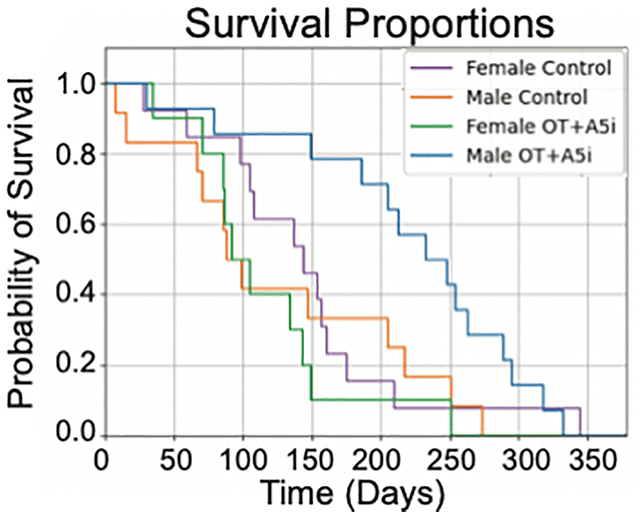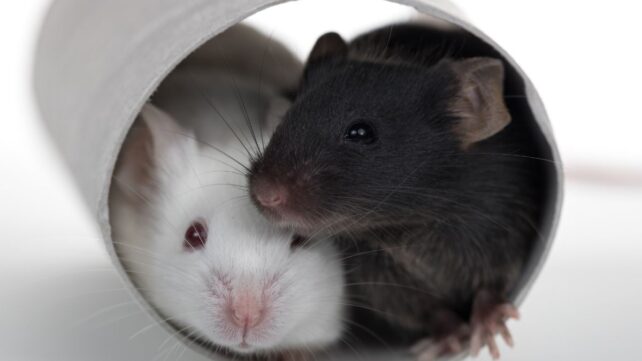A treatment that simultaneously targets two age-related pathways in frail adult mice has been shown to extend their lifespan by up to 73 percent in a study by researchers from the University of California, Berkeley.
Curiously, the effect was only seen in the males that were treated, highlighting how the biological mechanisms of aging can vary between the sexes, no matter the species.
The therapy combined two anti-aging treatments. The first is oxytocin (OT), an age-dependent natural hormone and neurotransmitter that – among functions involving social bonding and reproduction – aids in muscle growth and tissue repair.
Related: Cannabis Revealed to Have Anti-Aging Effect in The Brains of Mice
Second, an Alk5 inhibitor (A5i), known to target what's called the transforming growth factor beta (TGF-beta) pathway. This chemical communication channel becomes overactive as we age, damaging tissue and increasing persistent inflammation.
"Treatment of old frail male mice with OT+A5i resulted in a remarkable 73 percent life extension from that time, and a 14 percent increase in the overall median lifespan," write the researchers in their published paper.

The test animals were all 25-month-old mice; the equivalent of 75 years in humans. Treated males not only lived longer, but also showed improvements in physical performance, measures of blood proteins, and short-term memory, indicating a reversal of some of the limitations that come with old age.
As for why this didn't work at all with female mice, more research will be required to find out, though plenty of previous anti-aging studies have found differences between the sexes. It's not a complete surprise.
"The causes of these sex-based differences remain unknown, albeit we note that treatment of female mice with OT+A5i at late middle-age rejuvenates fertility," write the researchers.
The researchers suggest that future studies could investigate treating female mice at a younger age.
Whether similar therapies could extend health and lifespan in humans would also require ongoing research. Not only do anti-aging treatments have to be effective, they need to be free of significant side effects – something which has proved to be a problem with certain other approaches that otherwise showed promise.
While the body's biological pathways can be tweaked to counter some of the low-level changes that old age brings, that can then lead to disruption in other areas. It's a careful balance that isn't easy to manage.
What is encouraging is that oxytocin already has regulatory approval as a treatment for inducing labor and making it run more smoothly, while A5i drugs are now being tested as a way of treating cancer. That could expedite the process of checking for side effects when it comes to using them as an anti-aging treatment.
That's still some way off, but even if this particular drug combination never materializes as an actual product, the study offers some really useful pointers for developing treatments to slow aging – treatments that are increasingly in demand as the global population gets older.
"These findings establish the significant health-span extension capacity of OT+A5i and emphasize the differences in aging and in response to longevity therapeutics between the sexes," write the researchers.
The research has been published in Aging.

